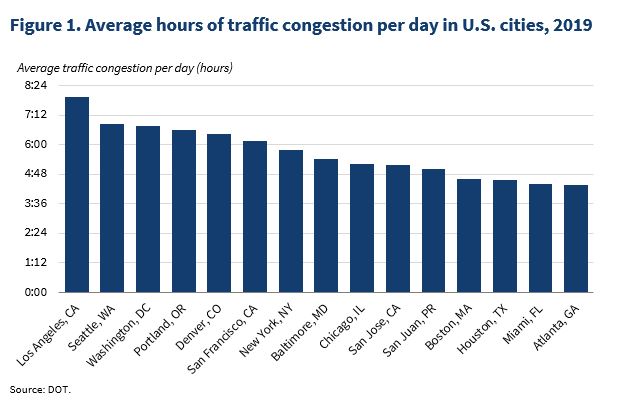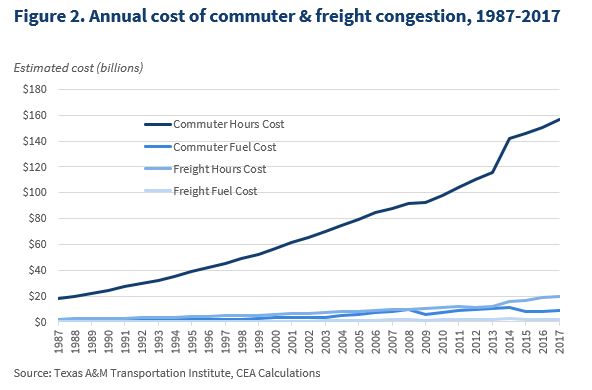Modernizing U.S. Infrastructure: the Bipartisan Infrastructure Law
Anyone who has driven on a highway recently or experienced a major train or airplane delay knows that investment in America’s infrastructure is long overdue.
What is less obvious is how failing infrastructure compromises American competitiveness and economic growth. Without safe roads and bridges, drinkable water, climate-friendly transport, or state-of-the art broadband, businesses cannot flourish and people cannot work productively.
The Bipartisan Infrastructure Law (Infrastructure Investment and Jobs Act), passed by Congress on November 5th and signed into law today by President Biden, seeks to turn this around with an historic amount of investment in critical infrastructure. In order to modernize the U.S. infrastructure landscape, the deal focuses on key areas, including:
- Improving and rebuilding roads, bridges, public transit, rail, ports, and airports
- Ensuring safe, lead-free drinking water for everyone
- Supporting climate friendly car and bus transport
- Transitioning to clean energy
- Providing access to high speed internet regardless of where one lives
This blog summarizes the economic case for these investments, which will increase productivity and ensure that the growth is widely shared. As detailed in a recent CEA issue brief, the Bipartisan Infrastructure Law can provide an overdue foundation for modernizing America’s infrastructure so that it is positioned to support a 21st economy.
How neglected is America’s infrastructure?
Public investment in U.S. infrastructure as a share of GDP has fallen by more than 40 percent since the 1960s. The World Economic Forum now ranks the United States 13th when it comes to the overall quality of infrastructure.
Examples of our nation’s fragile and aging infrastructure abound.
- More than 45,000 U.S. bridges and 1 in 5 miles of roads are in poor condition, per the American Society of Civil Engineers. In 2007, the I-35 bridge over the Mississippi River in Minneapolis collapsed during rush hour, killing 13 and injuring 121.
- Millions still get water from lead pipes, despite the fact that exposure to lead has irreversible health effects; in 2015, a state of emergency was declared in Flint, Michigan as citizens learned that their water supply contained toxic levels of lead.
- Climate-induced weather catastrophes are on the rise, with more intense hurricanes and drier and hotter conditions that make forest fires, heat-induced crop failures, and yield reductions more likely.
- U.S. buses—three-quarters of which are school buses—run mostly on diesel fuel, which causes health issues like asthma; and electric car sales have not come close to replacing gas-powered ones due in part to a lack of charging stations. The incentive to travel by public transport or rail is low due to the poor quality of many of these systems.
- In 2020, the COVID-19 pandemic revealed the harms caused to the millions without access to broadband internet, due to high costs or limited availability in the place where they live. Even before the pandemic, broadband internet adoption in rural areas resulted in economic benefits, potentially increasing income growth, the number of firms, and total employment numbers, while decreasing unemployment growth.
- In 2017, drivers sat in a lot of traffic, and the aggregate cost of congestion for commuters reached almost $160 billion (Figures 1 and 2). Moreover, unsafe roadways have lethal consequences: more than 30,000 people die in traffic accidents on U.S. roads each year, and motor vehicle crashes are the leading cause of death among children.


How does infrastructure support economic growth?
Governments have long understood that investments in basic infrastructure support economic activity. Crumbling roads and delays on trains, planes, and public transportation make the transport of people and goods harder and longer. Slow broadband hurts businesses and workers alike who depend on the internet for work.
Investments included in the Bipartisan Infrastructure Law seek to address key impediments to economic growth. An analysis of 68 studies between 1983 and 2008 showed that for each 10 percent increase in Federal government investment in infrastructure, national output grew by 0.8 percent in the short run and 1.2 percent in the long run.
Much of this effect is through supporting productivity: one analysis finds that a 1 percent increase in public capital investments in core physical infrastructure had a 0.24 percent increase in productivity.
At the same time, public investment in infrastructure spurs private investment; Pereira (2001) estimates that a public investment of $1 into electric and gas facilities, transit systems, and airfields leads to a $2.38 increase in long-term private investment. Concerns that public investment crowds out private dollars are exaggerated, and evidence actually suggests the opposite.
Importantly, economic gains from modernizing U.S. infrastructure should benefit the most economically disadvantaged, who have disproportionately borne the brunt of failing systems. By one estimate, a 7 percentage point increase in the growth rate of public investment in highways over a decade would erase almost two-thirds of the increase in income inequality observed between 2000 and 2010. Another study concludes that increasing infrastructure spending from 2 percent to 5 percent of GDP increases the wealth share of the bottom quintile from 3.95 percent to 4.49 percent.
Why should we invest now?
Infrastructure reform is long overdue. We are not only living with broken 20th century roads and bridges, but are missing out on the advances of 21st century, such as high-speed broadband. Failing to make these investments hurts the competitiveness of American businesses and the economic security of American families.
Now is also the time to make these investments from a financing perspective. The costs of borrowing remain at historic lows. For the first time since 2013, real 10-year interest rates on U.S. treasury securities have remained below zero for over a full year. Considering that new government debt would go towards increasing long-term growth, the downsides of increasing the debt are small in comparison to the benefits of this much needed infrastructure.
In Sum
These historic investments are long overdue. The Bipartisan Infrastructure Law takes critical steps toward modernizing our infrastructure in a way that will boost long-run productivity and deliver broad-based economic growth that reaches communities across America.

